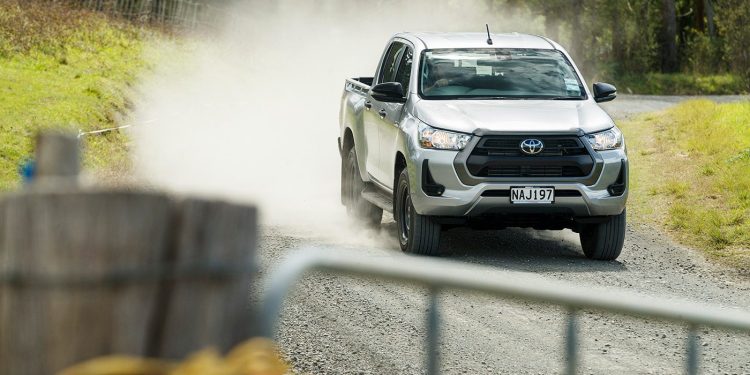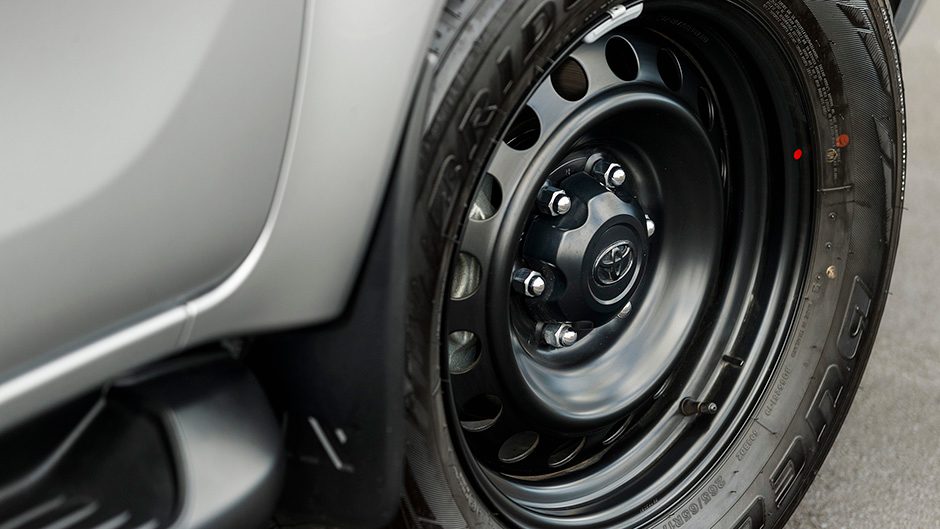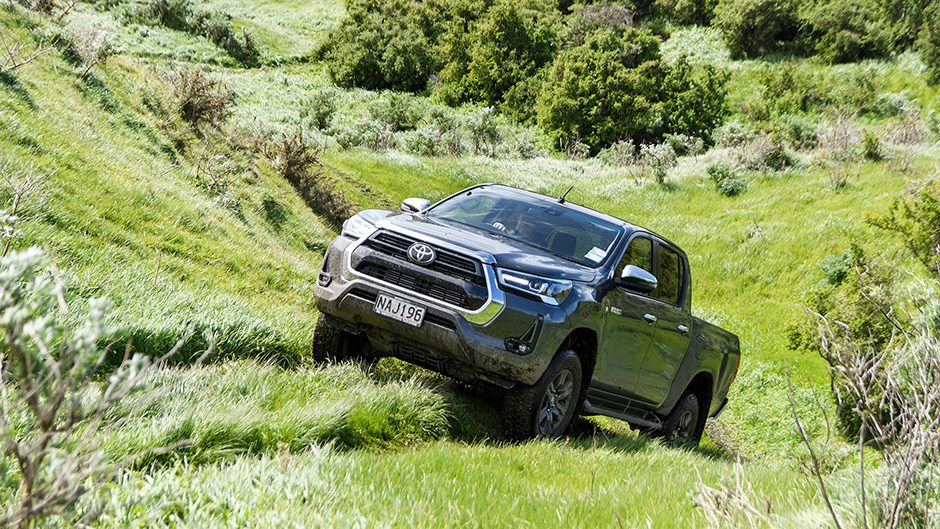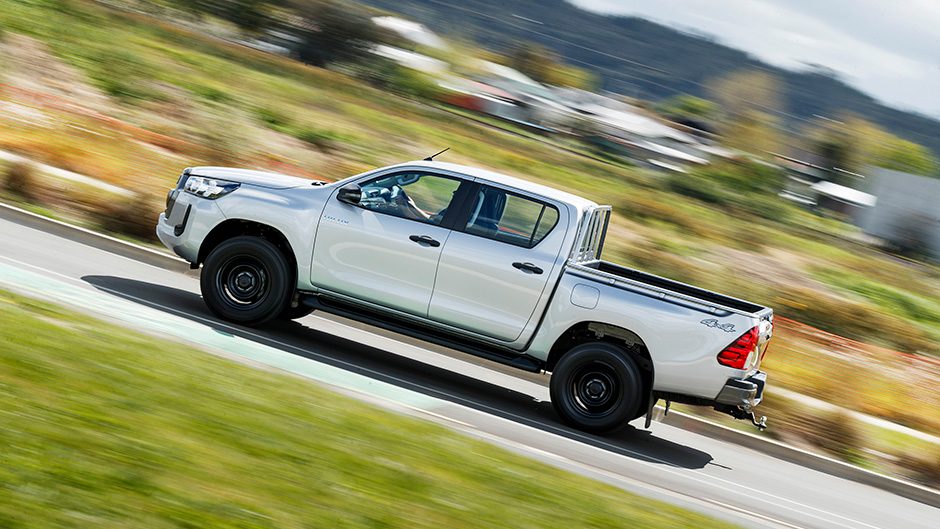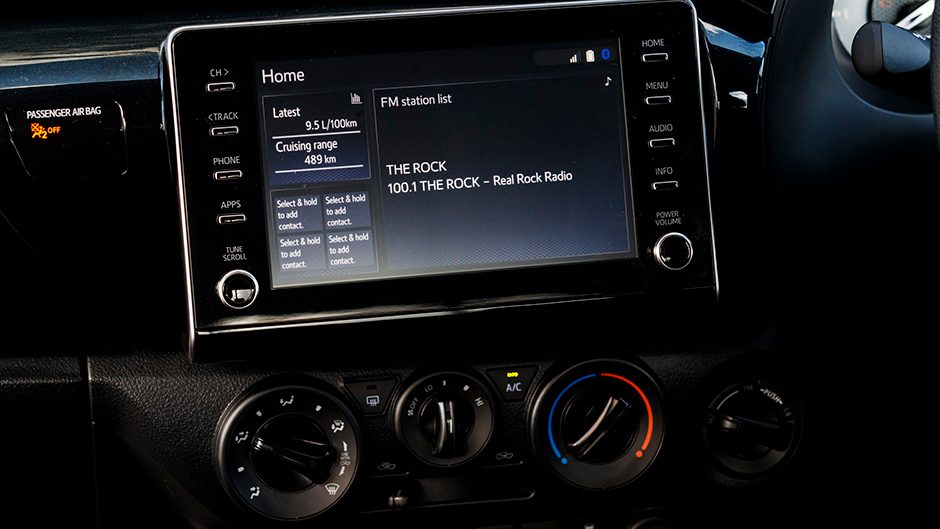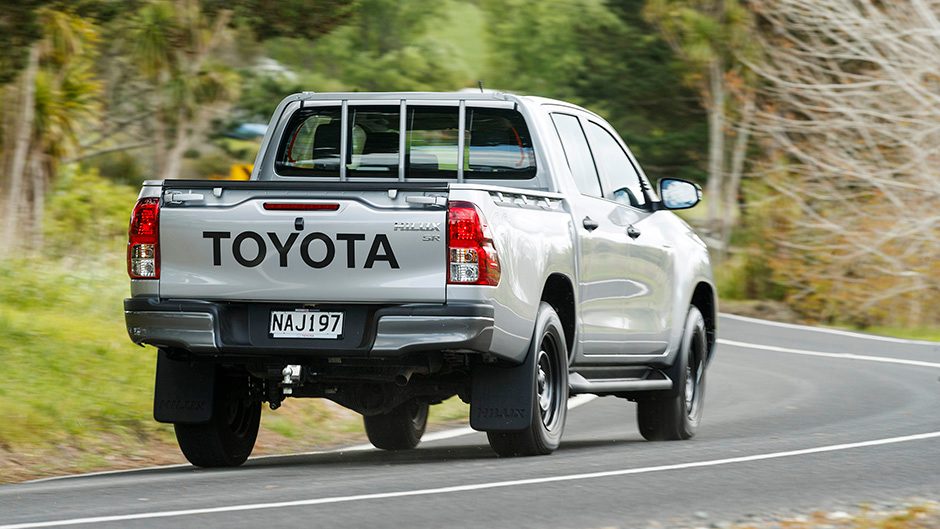2020 Toyota Hilux launch report
Words Matthew Hansen | Photos MH/Tom Gasnier
Toyota’s best seller renews, staying fit in the fight for ute supremacy. Are the changes good enough to topple the ranger?
The evening’s frequent references to the Toyota Hilux being something of a cultural icon here would’ve been slightly incessant, if they weren’t also quite true. Everyone in this wee country has some kind of Hilux story. My Dad has had a bunch of them, I learned to drive stick in one, my first work truck was a Hilux. It’s largely a national institution.
So it was the night prior to the launch of the 2021 Hilux, a significant refresh for the line-up and likely the last before it gets a new architecture. Toyota’s local boss, Neeraj Lala, fronted the evening, covering topics from Covid-19 response, to parallels between today’s crises and the industrial revolution of yesteryear, to the inevitable question of whether it’s hoped the new Hilux can topple the Ford Ranger for numbers. That last one copped a fairly adamant “no”.
The new Hilux line-up includes 18 models spanning five body styles. Workmate and single-cab variants look almost unchanged on the outside, while the extra- and double-cab SR, SR5, SR5 Cruiser, and adventure-loving Mako all adopt separate aggressive new snouts. Each is based around a wider grille garnished with varying degrees of chrome.
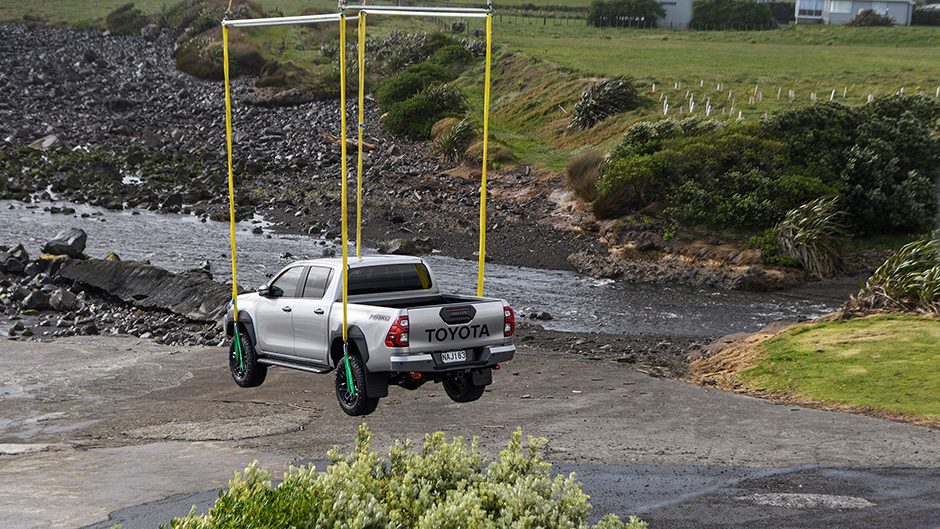
The SR5 gets a full chrome bezel, the Cruiser trades this for a heartier black plastic set-up backed by chunky new wheel-arch extensions with integrated fog lights, and the SR opts for a simple nude grey approach.
Toyota says the changes bring the Hilux design into line with its American cousins, the Tacoma and the Tundra. This, it says, is a reflection of customer attitudes — an observation that ute buyers like tough macho American styling. Hmm, wonder where they got that idea from?
The Hilux gets a heavily revised 2.8-litre turbodiesel four, tweaked for increased power, torque, linearity, and emissions. Toyota boasts that the unit produces 150kW of power and 500Nm of torque, representing a 30kW/50Nm lift over the last 2.8. Towing and payload are unchanged at 3500kg and 750kg, respectively.
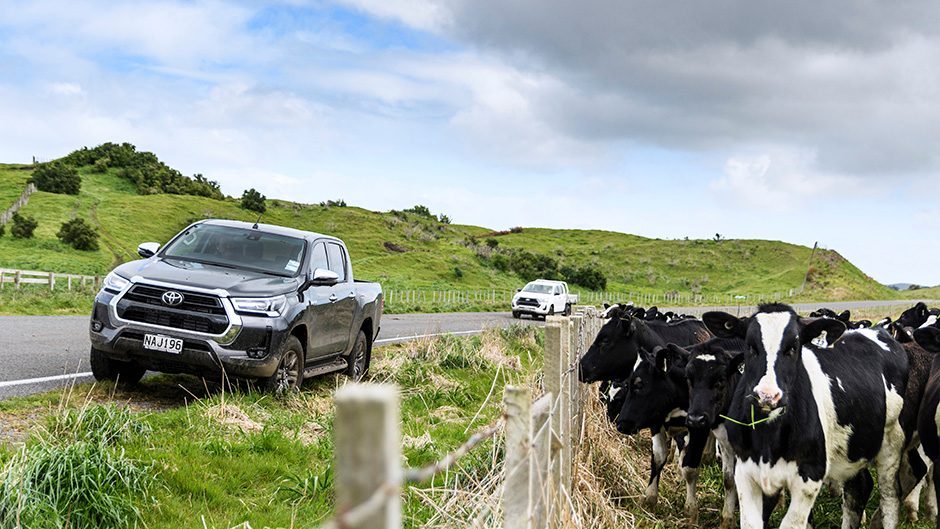
But that’s only part of the story. The aforementioned torque figure applies to models fitted with the six-speed auto. The 30 per cent of buyers that still opt for the six-speed manual are forced to settle for 420Nm.
It’s easy to forget that the 2.8 isn’t the only powertrain in the line-up. The bargain basement Workmate comes with an unchanged 2.7-litre petrol four producing 122kW/245Nm. Priced from $28,990 it’s the Hilux entry point. The range tops out with the $58,995 SR5 Cruiser 4WD. And sitting somewhere in between is the $49,990 SR 4WD wellside automatic and $53,990 SR5 4WD automatic.
I single these models out in particular because, barring the Workmate, they’re the ones we steered at the national Hilux launch. Starting at Toyota New Zealand’s head office in Palmerston North, we took a meandering scenic trek to New Plymouth, via stops at Waverly, a (typically) cloud-covered Mount Taranaki, Cape Egmont Boat Club (where the Mako was dropped off by Black Hawk helicopter), and finally New Plymouth to retire for the day. Adjacent to Waverly was the Lupton farm. Owned by Warwick Lupton of hydroplane powerboat fame and maintained in part by sons (and fellow sea racers) Ken and Jack, the property included a web of gravel roads and a craggy grass-surfaced off-road course.
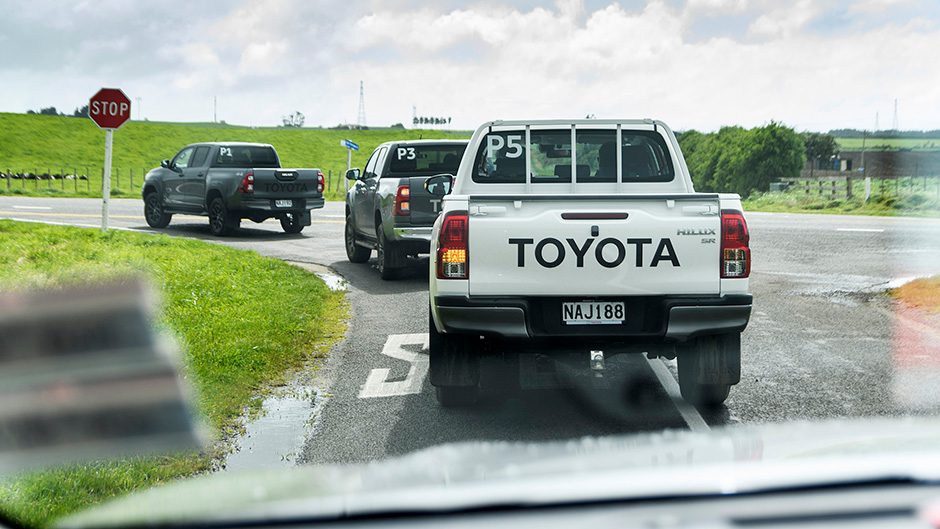
Despite some lingering mud from the previous night’s thunderstorm, the course and surrounding roads didn’t present much of a challenge. But, they did allow for the Hilux to show off some of its core improvements. Bounding through the backblocks, its off-road experience felt more predictable than the outgoing gen. The revised suspension soaked up off-road surface changes effectively, neatly communicating them back to the driver. On steep climbs the new electronic automatic limited-slip differential (exclusive to 4WD variants) helped improve traction, and on steep descents the Downhill Assist Control was both super smooth and quieter than those of most Hilux peers.
These improvements speak to the area where Toyota has clearly placed most of its focus. While new looks and a more powerful donk have been pumped out in all the Hilux headlines, the brand has done most of its work in refining the platform. It’s an attack on the model’s past vices, all of which have been addressed to some degree on the updated model.
Most comprehensive of these is the way it rides. To be fair, Toyota did soften the rear leaf suspension set-up of the Hilux during its 2018 update. But they’ve managed to find yet more comfort. For 2021, the firm has added an additional leaf spring to all high-riding double-cab rear ends, further complemented by retuned shocks, spring rates, and bushes. Over the day’s driving, most of which was on paved roads and smooth gravel, the Hilux showed itself to be much more comfortable handling bumps and divots. It’s not a transformative change (a Ranger or Triton presents a smoother ride) but it’s more than noticeable.
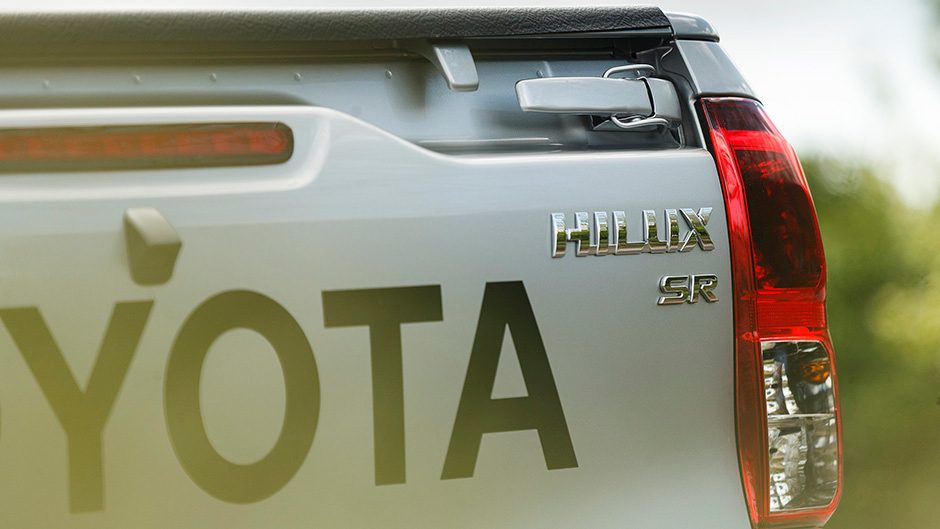
The powertrain, too, benefits from a focus on making the Hilux better for day-to-day commuting. The additional output has been calibrated to emphasise a more linear delivery of power and torque. You won’t necessarily notice much change in off-the-line performance, but you will when it comes to overtaking — or really any scenario that requires the sudden summoning of low-down grunt while in motion. Peak power arrives at 3000–3400rpm and peak torque at a mere 1600–2800rpm. While the auto isn’t quite a match for the 10-speeder of the Ranger, it’s still quick enough to kick down when required.
And the rig’s a little quieter, too — less signature diesel rattle on start up, and road noise is well muffled at operating speeds. The way the 2.8 rushes to redline is less strained, making the whole driving experience a lot more fluid behind the wheel. Toyota has added a variable-flow pump to make steering heavier at motorway speeds and lighter at low speeds. While the former is mostly indiscernible, the latter makes a big difference for navigating lock to lock while parking.
Toyota claims to have also fixed the model’s DPF issues. The new DPF system will perform burn-offs automatically (notifying you while it’s doing so), but drivers can also instruct manual burn-offs via a button to the bottom right of the steering wheel.
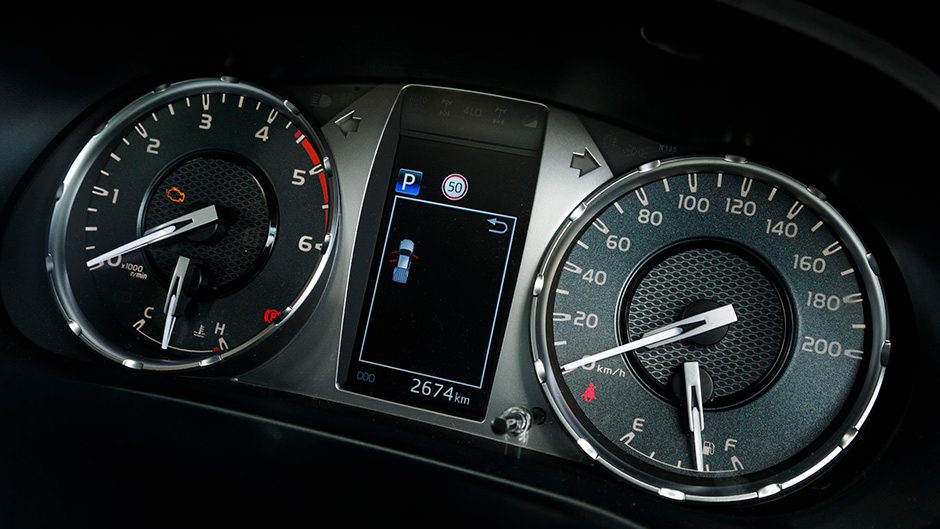
In the wake of the launch, NZ Autocar was afforded an extended spin in the base SR 4WD. To me, it represents the pick of the line-up. The gruff ‘United Nations’ looks play a part here but so too does tech. The SR comes equipped with all of the same Toyota Safety Sense active safety features as the rest of the line-up, meaning that it no longer represents a compromised choice for those wanting a better deal.
Naturally, SR buyers miss out on a few features, like sat nav, parking sensors, LED headlamps, automatic climate control, keyless go, and a leather steering wheel. The cabin trim is different too — there’s no faux metal or woodgrain, instead everything is durable black plastic. But they do get Toyota’s reasonably capable radar cruise control, autonomous emergency braking, lane departure alert, and downhill assist (a first for this trim level). The SR also gets road sign assist but, like in other Toyota models, it occasionally reads signs incorrectly.
The generous outlay of kit also includes the same 8.0-inch infotainment system as in other models paired to a 4.3-inch display in the instrument binnacle. It finally comes with Apple CarPlay and Android Auto for those who crave it, and is quick and simple to connect to Bluetooth for those who don’t. The extended bezel around the screen helps it look more integrated, but will obscure some of the climate control functions for taller drivers.
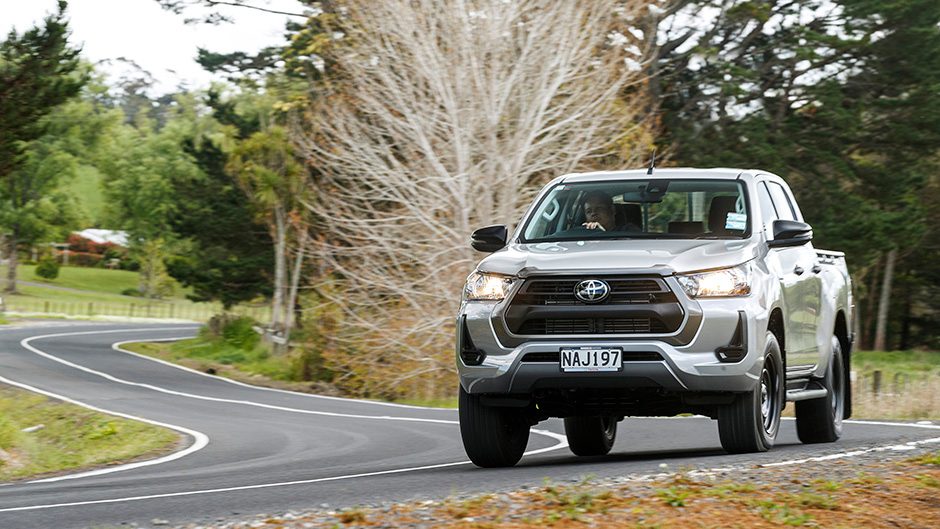
A week with the SR backed up our views on the 2.8-litre. Over a week of driving, economy settled at 9.0L/100km — not far short of Toyota’s 7.9L/100km estimate. Its pleasant characteristics probably don’t make for compelling reading for those clinging to images of Crumpy hurling Hiluxes up hills, spraying city slicker Scotty in the face with mud. But, it’s these city slickers and their need for practicality and comfort that are driving the sales of utes in New Zealand.
The considerable challenge on the horizon for the Hilux is the volume of peers shifting to all-new platforms. The next generation Ranger and Volkswagen Amarok are expected to break cover next year on fresh shared architecture. The all-new Isuzu D-Max and Mazda BT-50, also blood brothers under the skin, will be on local roads before the end of the year. Cram in a few extra wildcards — like the Nissan Narava update and all-new Great Wall Cannon — and the Hilux has a heck of a welcoming party.


